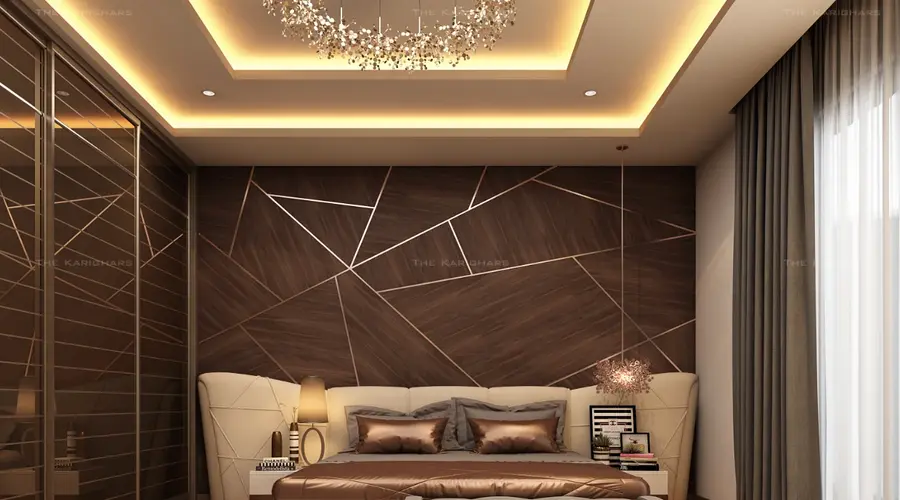An incorrect lighting plan can ruin your space. It doesn’t matter if you have the best materials find the perfect colors and beautiful textures.
If they are not illuminated correctly, it’s not worth the investment. If you want to learn how to select your lamps and distribute them correctly in the space then you are in the right place.
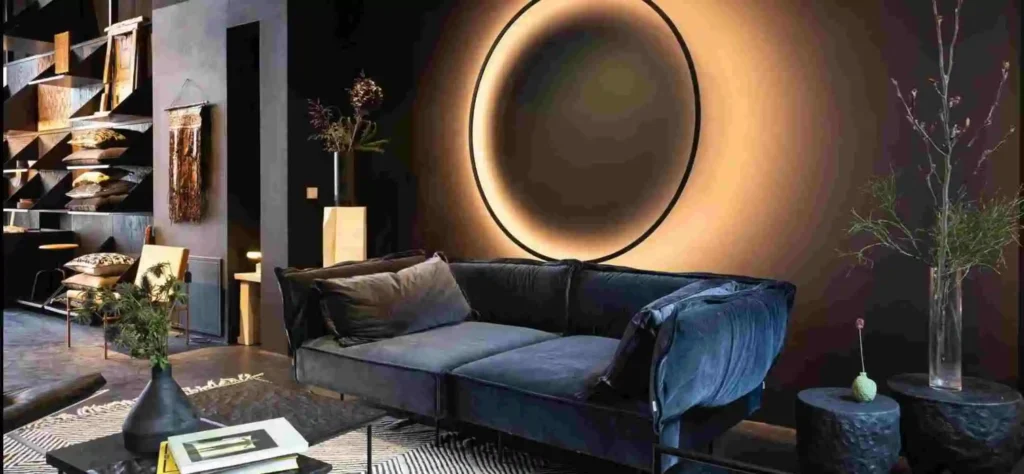
If you have any doubts after reading this post, don’t forget to comment below. I’d love to have your response.
In this post, I’ll show the types of lamps used in interior designing and how to choose and combine them. So please be with us till the end.
Let’s take a ride.
Types Of Lamps
Let’s start by knowing the different types of lamps according to their function. Lighting Designers usually divide lamps into two large groups.
- Decorative Lamps
- Architectural Lamps
Decorative Lamps
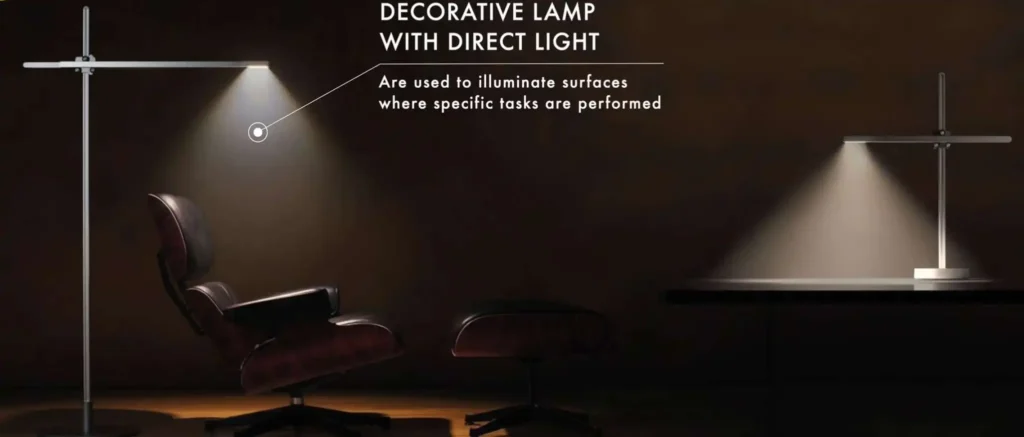
Decorative lamps are used to offer us a luminous effect that contributes to the aesthetic of the space.
These come in different shapes and styles such as pendant lamps, wall scones floor, or table lamps.
Apart from illuminating a certain area, its objective is beautifying the space. Thanks to shapes and materials it apart from providing light.
Decorative lamps are also a crucial element in the compensation size statistics. To choose them we need to consider two fundamental aspects.
- Light Projection – how lamps project the light
- Aesthetics
Light Projection


Decorative lamps with focus are used to light places where specialized occupations, such as reading, studying, sketching, eating, or cooking, are undertaken.
These lamps are not only useful in that they provide appropriate illumination for tasks, but they are also an important part of the space decoration.
Now that you know that decorative can generate different lighting effects you can realize that a decorative lamp can work better in space than others.
The ideal option will be determined by the activities you plan to do in a certain area. So this is the first aspect when selecting decorative lamps.
Aesthetic
When selecting decorative lamps determine what style characterizes the space and select a lamp that corresponds suits your design.
For example, if your interior design is minimalist, opt for a lamp with simple lines and shades.
If you are not one of those who like to mix styles you can choose lamps that contrast with your decoration to make the focal point of a space.
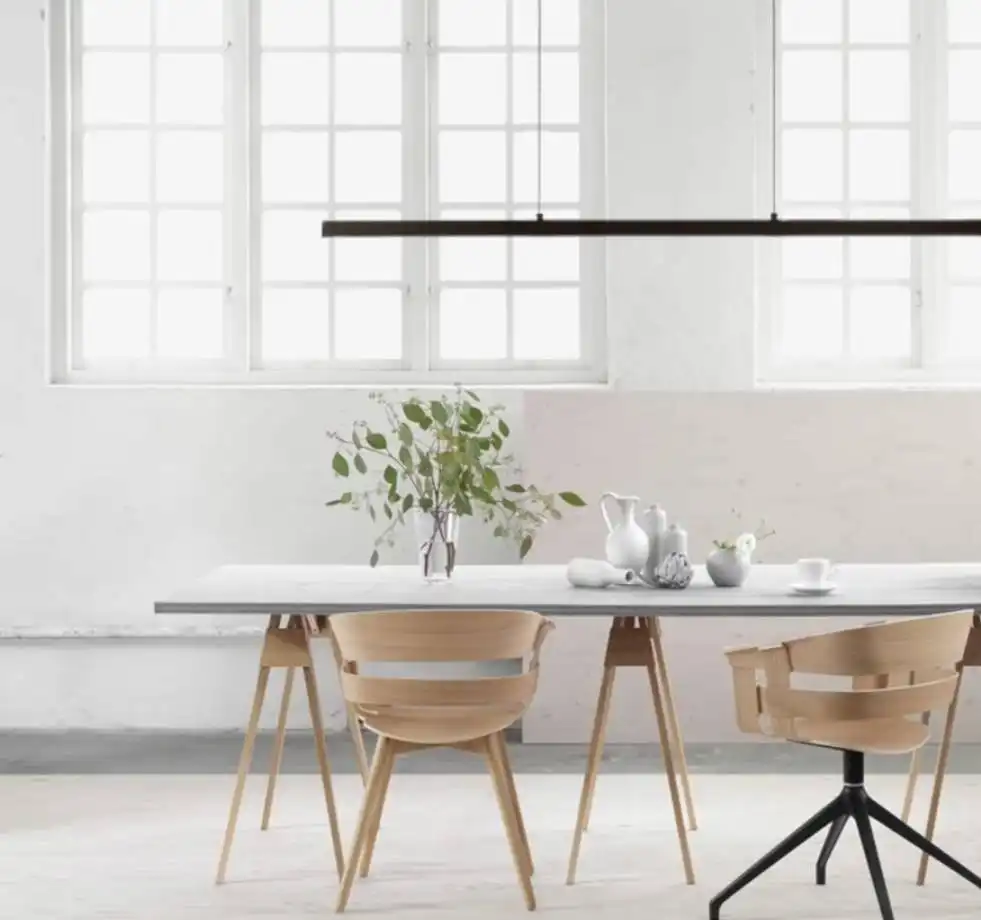
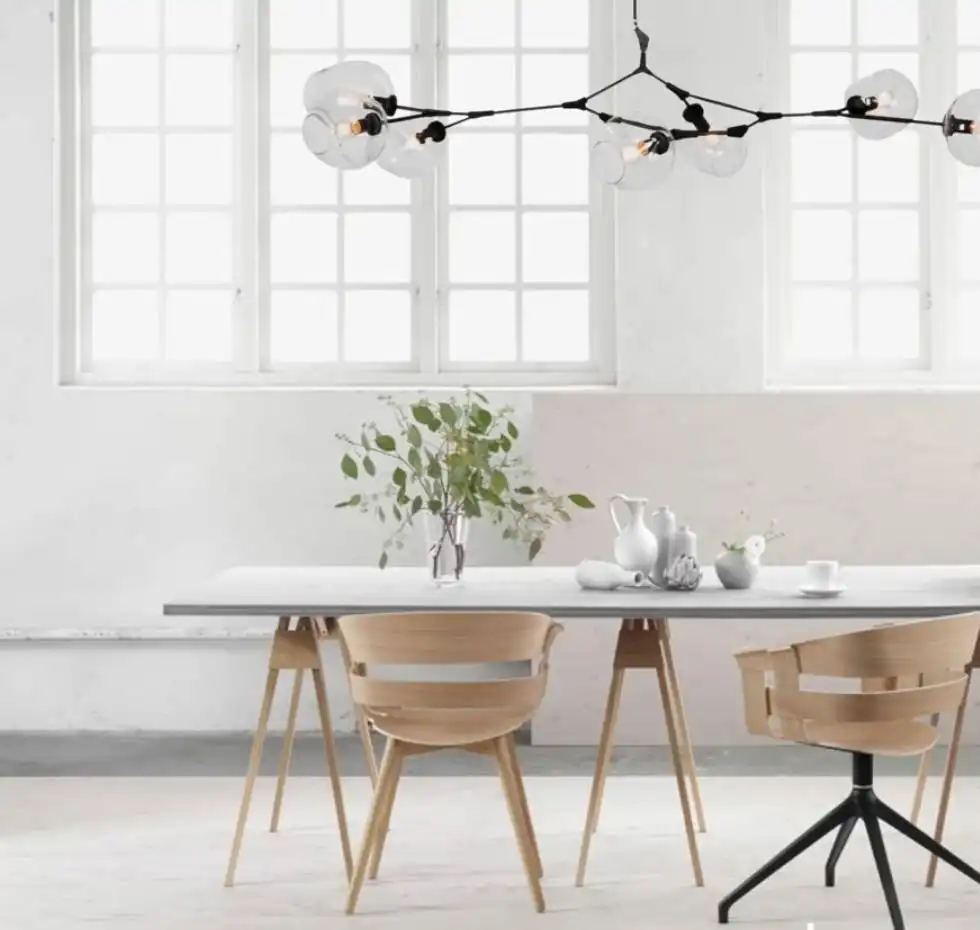
How To Combine Decorative Lamps?
The ideal option will be determined by the activities you plan to do in a certain space. They need a common thread to warrant that area composition feels cohesive.
You can achieve this by choosing lamps with similar made of different materials or colors or you can combine lamps with totally different shapes but with the same material or color.
We already know about decorative lamps. Now let’s talk about the second Architectural Lamp.
Architectural Lamp
These are the ones that are part of the geometry of architecture. They are discrete lamps used in all interior spaces regardless of their style.
Its goal is to brighten the space practically and functionally. These are recessed, ceiling-mounted lamps, LED stripes, Spotlights, and track lamps.
Its main objective is to correctly illuminate the space and accentuate decorative elements, architectural factors, or materials. Let’s see what to use and how to use each one.
Recessed Lamps
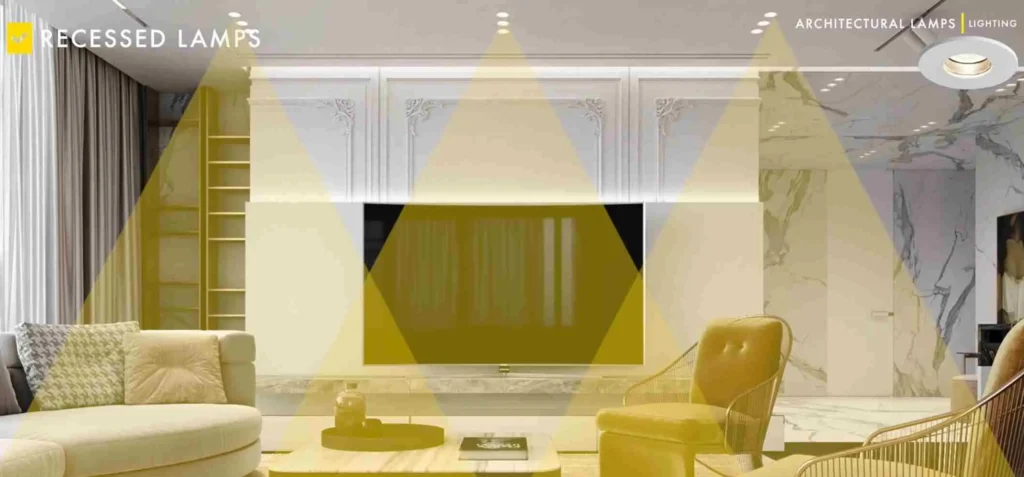
They are very typical for the general lighting of space you need to have a false ceiling to install them since they need space for their installation system.
This can be used for both residential and commercial use. They are functional and discrete lamps that don’t alter the room’s aesthetics. The beam angle of light can vary.
If the beam angle of the lamp is wide they are ideal for any space ambient lighting from living rooms, bedrooms, dining rooms, and kitchen to corridors.
If the beam angle is the correct use of these is to accentuate a specific area.
The decorative and architectural details but not to be distributed throughout the space to achieve general lighting.
Ceiling Mounted
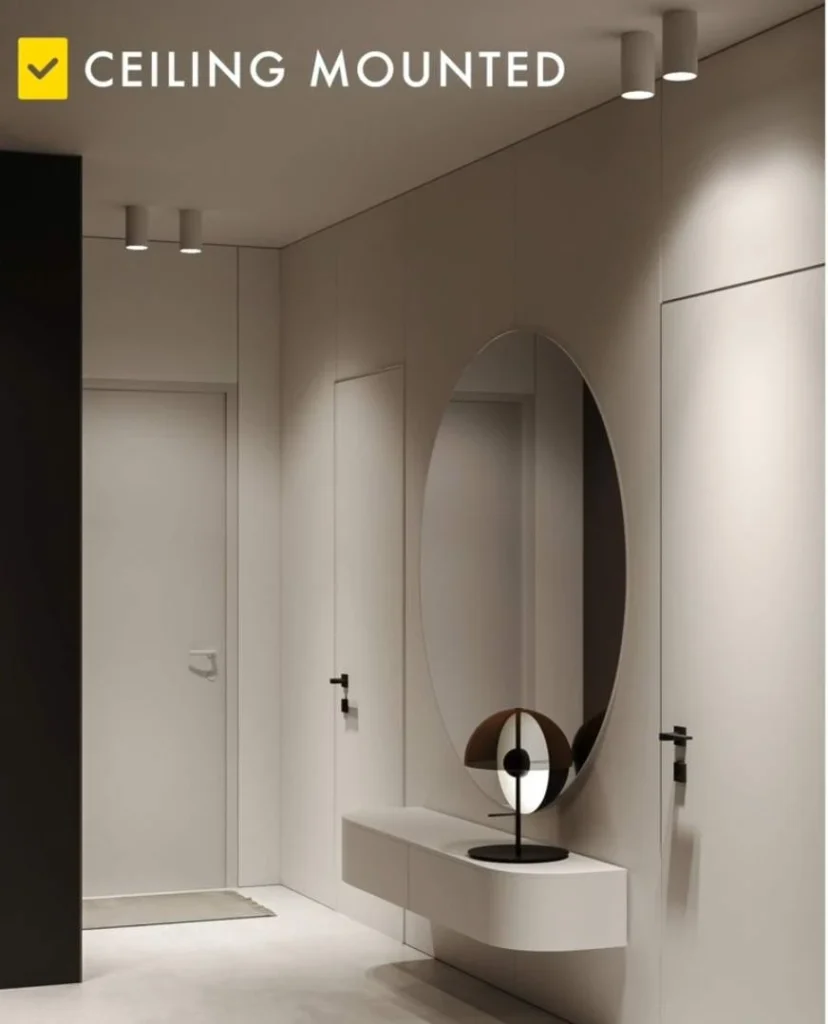
Ceiling-mounted lamps have characteristics of the recessed one still they are used in space where there is no false ceiling. The general illumination of the space is its primary goal.
Spotlights
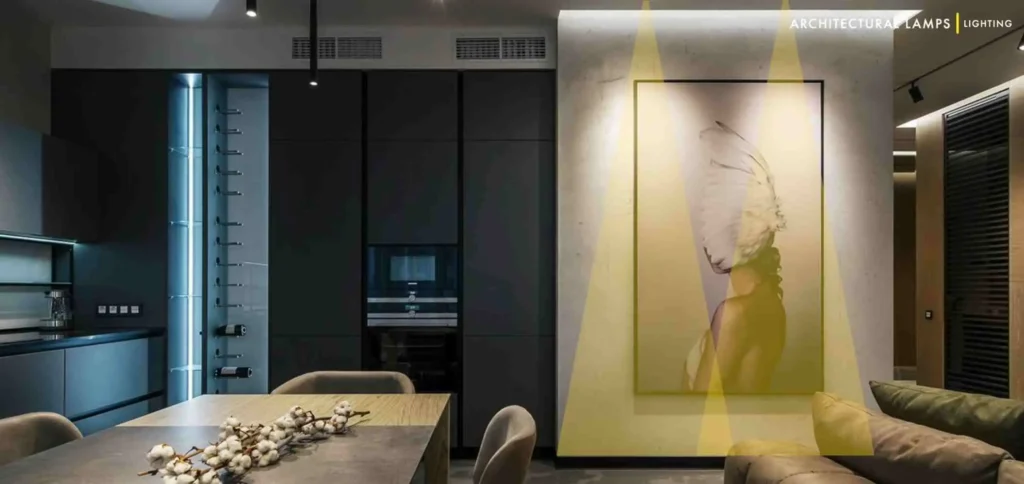
Spotlights aim to highlight specific interior design elements such as paintings, sculptures, decorative items, wall textures, and so on.
The spotlights must have a narrow beam angle that focuses on the specific point you want. It may be adjusted to focus in the direction desired.
LED Stripes
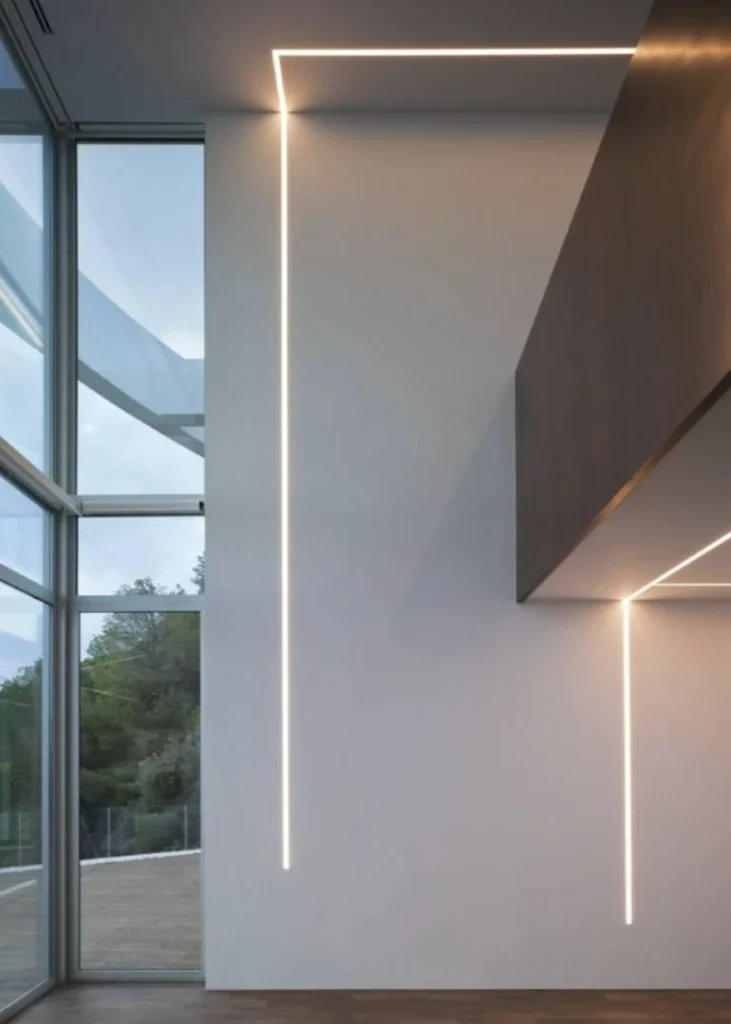
They are one of the favorite contemporary lighting designs due to the versatility of the LED strip can define volumes and light up furniture or functional areas like kitchen cabinets.
It provides soft and diffused lights suitable for space ambiance and general lighting.
Track Lighting

These are lifesavers in rooms without a false ceiling and only one light outlet, normally in the center of the room.
You can linearly distribute the lamps throughout the rail to illuminate spaces evenly without remodeling your electrical system.
For example, if your kitchen is dark and you have one light outlet in the center of the ceiling.
This system is very convenient because you can use that single outlet to distribute various light points on the track this way you will obtain more homogenous lighting with a more contemporary appearance.

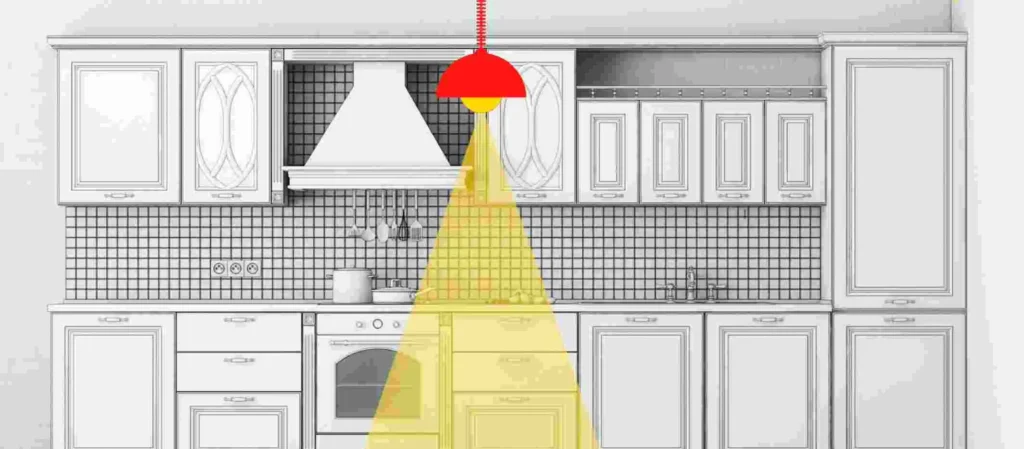
Because industrial contemporary or minimalist designs have accepted it as a part of their aesthetic language, this sort of lamp might be regarded as a decorative lamp in some situations.
How To Plan Lighting Design For Home
1. Use Multiple Lamps
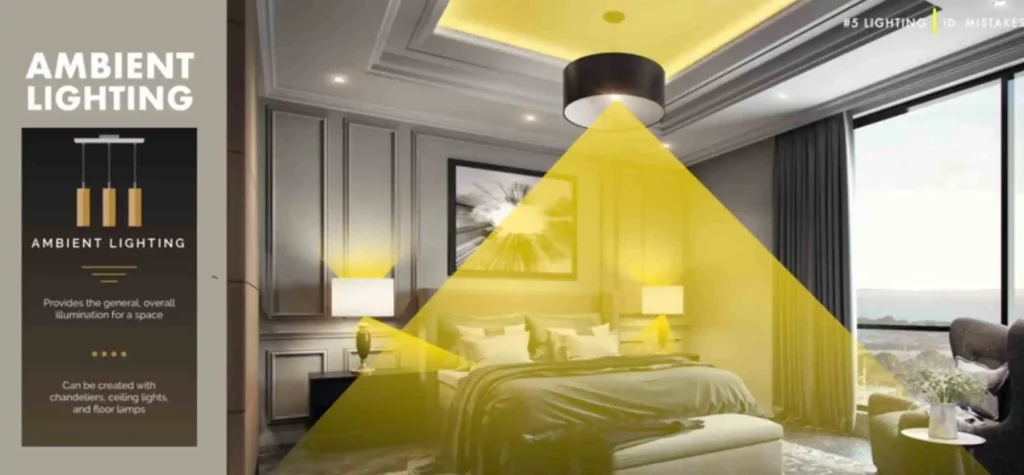
Ambient Lighting – provides the general overall illumination for a space
One light source is not enough for space it doesn’t help to create contrast, depth, or define shapes and makes the colors pop.
In any space, you must plan different lighting layers for optimal results consider ambient lighting for overall illumination through the table, wall, floor lamps hanging, and ceiling lamps.

Accent Lighting – highlight a specific focal point
Add extra lights to highlight a particular object or area and draw attention using a spotlight.
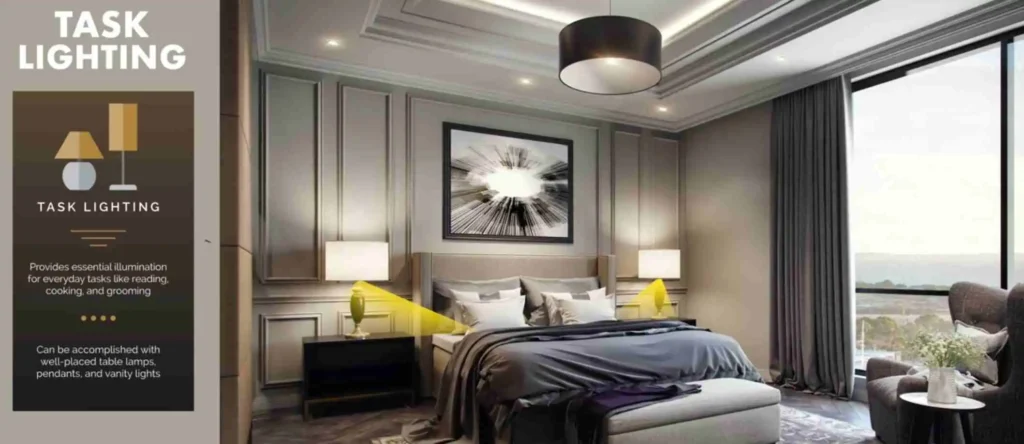
Task Lighting – provides essential illumination for everyday task
Add task lighting for a specific work or activity, such as reading, writing, cooking, or dining.
Use a table or floor lamp with direct lighting for reading under the cabinet light for the countertop pendant lamp to illuminate the dining table.
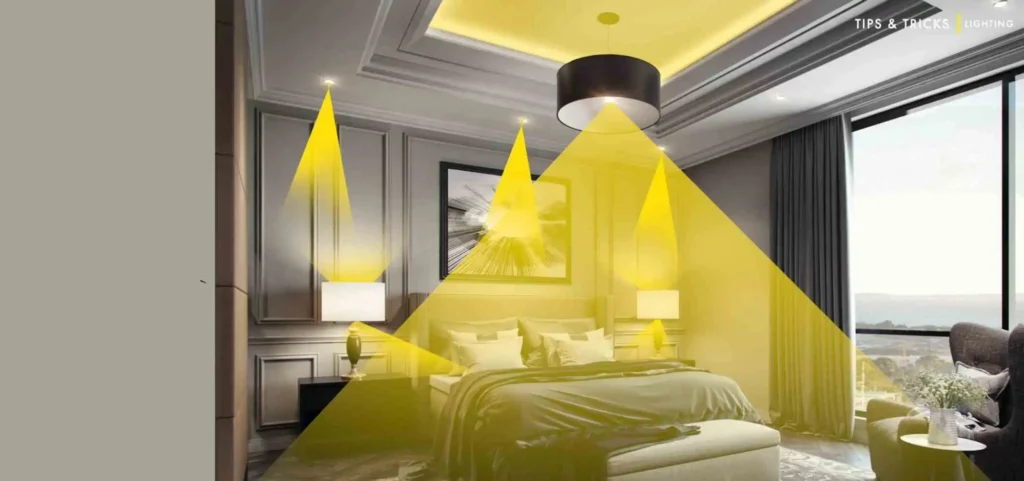
A good lighting plan will combine all three resources to distribute them in different levels and layers.
2. Plan Your Space
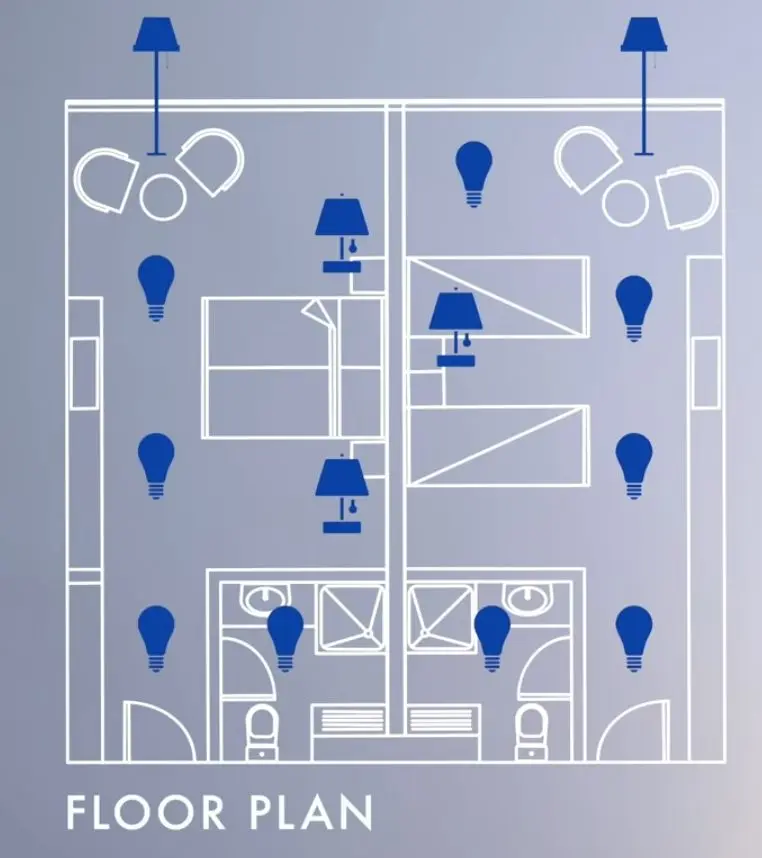
It will be best to have a precise idea of how the furniture will be distributed in space. This way you can place different lamps correctly and efficiently.
For example, if you have a wall be the focal point of the dining or living room space you must consider placing a spotlight or track light to illuminate that area and accentuate it.
3. Use the Space

Before selecting lamps first identify how space will be used and what activities will be carried out to identify the types of lamps you need.
If you’re going to utilize the room to read or study, for example, you’ll need a lamp to illuminate the work area directly.
4. Functionality


It’s crucial to keep in mind while hanging pendant lamps that they don’t obscure the view or interfere with the flow of activities.
Consider another light or utilize it at a higher place if the light you’re considering hinders the space’s optimal functionality.
5. Try It OUT
Before investing in your lamp identify how and what amount of light it projects and know the light effect of it. Especially, when you’re going to buy a large amount.
Before investing in these lamps buy one or two and test how the lighting behaves in the space, especially at night.
If you’ve determined that light is appropriate, buy only what you’ll need to prevent wasting money.
